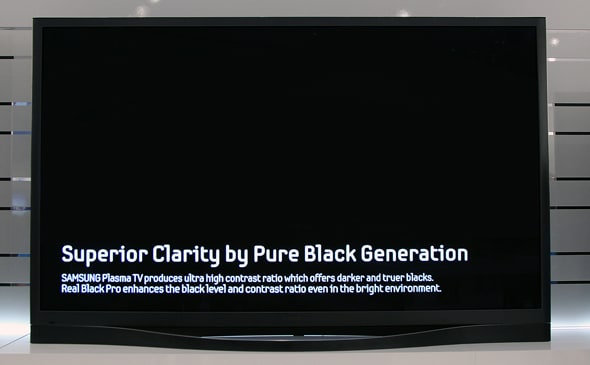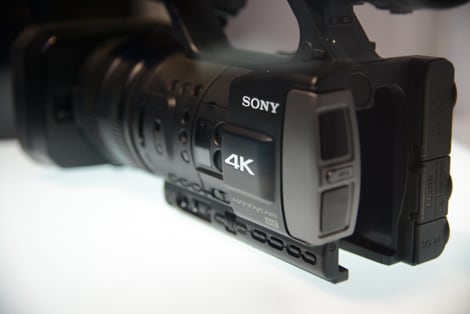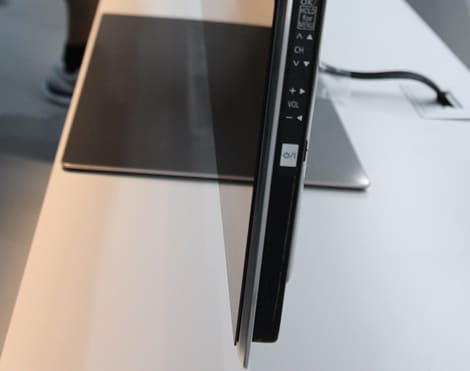Introduction
Front
{{section_header}}{{section.name}}{{/section_header}}
The {{product.name}} is nowhere near ready for market, so there's not much to talk about in terms of design. The screen measures 20 inches diagonally.

Back
{{section_header}}{{section.name}}{{/section_header}}

Sides
{{section_header}}{{section.name}}{{/section_header}}


Stand/Mount
{{section_header}}{{section.name}}{{/section_header}}

Display Size & Technology
{{section_header}}{{section.name}}{{/section_header}}
The {{product.name}} displayed at CES is a IPS-Alpha LCD panel using LED edge-lighting. It has a pixel count of 3840 x 2160. With a screen size of 20 inches, that puts the resolution at 216 ppi, which is pretty remarkable. It's close to print resolution, which is 300 ppi (or dpi, if you're being particular). By comparison, most web resolution, like this website, is 72 ppi.

There's actually some debate about whether the 3840 x 2160 resolution should truly be called 4K, as the horizontal resolution is below 4000 pixels, but that's not stopping Panasonic from branding it as such. Somehow they must think that the alternate moniker, Quad Full High Definition, just doesn't have the same buzz.
This is not Panasonic's first 4K display, either. At last year's CES they unveiled an enormous 152-inch plasma with the same 3840 x 2160 pixel count. Granted, the engineers probably needed that much room to fit so many pixels, as plasma cells are difficult and expensive to shrink, which is why you don't see many plasma TVs under 50 inches. Panasonic is clearly eager to prove their engineering adeptness, though, because this year they went to the other extreme and packed it into a 20-inch LCD.
Formats & Resolution
{{section_header}}{{section.name}}{{/section_header}}
The sharpness of this screen is unbelievable. Because of the small screen size, you have to get right up in front of it to see the detail, but once you do you'll be amazed. For demonstration purposes, Panasonic had a 1080p display positioned side-by-side with the 4K display. The most impressive sample was a screen full of letters, like an optometrist's chart. The letters on the bottom line were impossible small, and the 1080p display could only render a square block of black pixels. The 4K display could perfectly resolve each letter.
That sort of resolution has a certain wow factor, but it's fair to ask what practical application that would have in your house. But that's not the right question. It's not intended for your house. The first place we'd expect to see it is in medical imaging. Imagine your doctor missing a tumor because the screen resolution was too low. Not so dismissive now, are you?
Below are the best examples that we could grab given the lighting conditions and semi-restricted access of the CES show floor. It was shot in a dark room at close range with a First, the 1080p sample:

Now here's the 4K version:

That's an awful lot of extra detail.
Brightness, Blacks and Contrast Ratio
{{section_header}}{{section.name}}{{/section_header}}
The {{product.name}} is rated at a maximum brightness of 450 cd/m, according to the manufacturer.
Color
{{section_header}}{{section.name}}{{/section_header}}
The {{product.name}} conforms to the sRGB, or about 70% of NTSC, as it was explained to us by a product specialist on-hand.
Viewing Angle
Conclusion
{{product.vanity}}
There's not much of a conclusion to be drawn from our time with the {{product.name}}, except to say that 1) it's really, really sharp, 2) it's not ready yet (they didn't even have a casing for it), and 3) we're impressed. If we examine the 4K2K technology as a whole, there's clearly a lack of content right now. 3D TV has been around for three years now and people are still complaining that there's nothing to watch. It's going to be a long time before there's a sufficient amount of 4K content. The bandwidth requirements are substantial, so the cable and satellite networks are not going to leap to the rescue.
Likely, when it's ready for the living room we'll see a simultaneous introduction of 4K TVs coupled with upscaling devices (either Blu-Ray players or in-TV processing) that converts HD to 4K. Before the living room, though, 4K is probably going to enter the professional world in places like medical imaging. We're excited for a future where pictures look this good.
Specs
{{manufacturer_specs_table}}
Meet the tester
David Kender oversees content at Reviewed as the Editor in Chief. He served as managing editor and editor in chief of Reviewed's ancestor, CamcorderInfo.com, helping to grow the company from a tiny staff to one of the most influential online review resources. In his time at Reviewed, David has helped to launch over 100 product categories and written too many articles to count.
Checking our work.
Our team is here for one purpose: to help you buy the best stuff and love what you own. Our writers, editors, and lab technicians obsess over the products we cover to make sure you're confident and satisfied. Have a different opinion about something we recommend? Email us and we'll compare notes.
Shoot us an email
